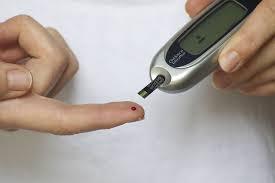
By now, everyone who’s interested knows that there are 2 main types of diabetes — type 1(in which the pancreas doesn’t produce insulin) and type 2 (in which body tissues don’t or can’t respond appropriately to insulin), typically seen in adults. But many of us, and apparently even some doctors, don’t know about or properly diagnose type 3c, now known as diabetes of the exocrine pancreas.
First, a little background information is appropriate. The pancreas is a multi- function organ. Its beta cells produce insulin and the alpha cells produce another hormone — glucagon. In addition to these endocrine products (1), the pancreas also has an exocrine (2) function — when food enters the small intestine, the pancreas secretes bicarbonate to counteract the acid from the stomach, as well as digestive enzymes that break down fats and proteins. Without those products, normal digestion can’t occur. When the pancreas is damaged by disease or its structure altered by surgery, both exocrine and endocrine functions are often disrupted — and diabetes can result.
This diabetes is often diagnosed in middle-aged persons, and they can easily be seen as having type 2 diabetes. But that’s not necessarily the case, and it’s important for a correct diagnosis so that the condition can be treated appropriately.
Dr. Chris Woodmansy from the University of Surrey in the UK and several colleagues performed a retrospective analysis of over 2 million patients’ records in England. They were interested in learning how many new (incident) cases of adult-onset diabetes were diagnosed between the years of 2005 and 2016, how many were likely to be type 1, 2, or 3c diabetes and how they were classified by the treating physician. Their report was published in Diabetes Care.
Over that period, there were over 31,000 new diagnoses of adult-onset diabetes. Of these cases, 559 were diabetes that followed pancreatic disease —361 followed acute pancreatitis and 198 followed chronic pancreatic disease.
However, nearly 88 percent of these patients were classified as having type 2 diabetes by their physicians. This type of error can be important, as these patients were more likely to have poor control of blood sugar, and were more likely to need insulin within 5 years of diagnosis than type 2 diabetics — up to 45 percent VS 4 percent respectively.
The authors wrote:
The combination of increased likelihood of poor glycemic control and accelerated requirement for insulin suggests that patients with diabetes following pancreatic disease may benefit from more frequent review than is normally necessitated in type 2 diabetes.
Thus people with or recovering from pancreatic disease may need different care than those with true type 2 diabetes — something that both physicians and their patients need to be aware of.
1. Endocrine refers to the production of hormones, which are directly secreted into the blood.
2. Exocrine refers to the production of other products that travel through ducts to reach their targets.



